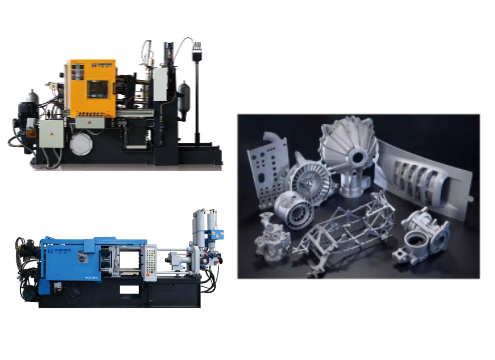Robotic Die Casting will develop towards intelligence in the future.
The future of robot die-casting will present a three-dimensional development pattern characterized by “intelligentization as the leading force, material innovation breakthroughs, and cross-industry penetration”.
With the in-depth application of Industry 4.0 technology and the promotion of green manufacturing policies.
This technology will not only reshape traditional fields such as automobiles and robots.
But also may become the core support for low-altitude economy and aerospace manufacturing.
For example, Haichen‘s customers request a robot set to speed up production when selecting a die casting machine.

The deep integration of automation and intelligence
- The full-process unmanned production is accelerating its popularization
- The application of digital twin and simulation technology
The full-process unmanned production is accelerating its popularization
At present, leading enterprises such as Xiaomi‘s car factory have achieved 100% automation in processes like die-casting, stamping.
And inspection, reducing the production cycle of a single vehicle to 76 seconds.
In the future, through the integration of Internet of Things, big data and AI technologies, robot die-casting will achieve a higher degree of autonomous decision-making.
For instance, the intelligent control system can monitor the equipment status in real time and predict faults.
And provide dynamic optimization solutions in combination with the process database.
The collaborative robots launched by enterprises such as ABB have been able to achieve human-machine collaboration in complex tasks and enhance decision-making flexibility.
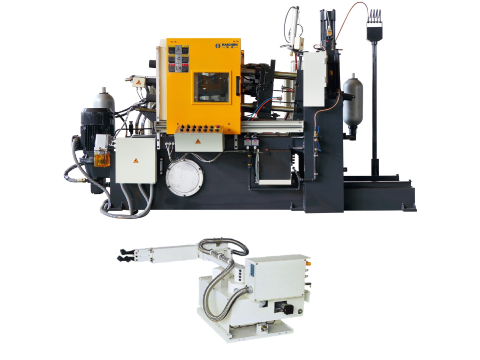
The application of digital twin and simulation technology
Lk Technology has introduced digital twin technology in super-large die-casting units.
Optimizing die-casting parameters through virtual simulation to reduce actual trial-and-error costs.
Such technologies will drive the die-casting process from experience-driven to data-driven, shortening the new product development cycle by more than 30%.
Then,Haichen’s next-generation die-casting machine possesses the ability to autonomously learn and optimize, enhancing production flexibility and adaptability through data analysis to predict potential issues and optimize process parameters.
Furthermore, digital integration technologies are driving the development of die-casting machines toward greater intelligence, enabling advanced functionalities such as predictive maintenance and real-time process optimization.
Material innovation drives technological innovation
- Large-scale application of lightweight materials
- Breakthroughs in the process adaptability of composite materials
Large-scale application of lightweight materials
Magnesium alloy semi-solid die-casting technology has become the focus.
Its density is only two-thirds that of aluminum alloy.
Which can reduce the weight of robot joint components by 20% to 30% while maintaining high strength.
Tesla’s Optimus humanoid robot has adopted such technology and is expected to drive magnesium consumption by 13,700 tons in the long term.
In addition, the development of heat-treatment-free aluminum alloys has solved the deformation problem caused by traditional heat treatment and supports the production of large-scale integrated die-castings.
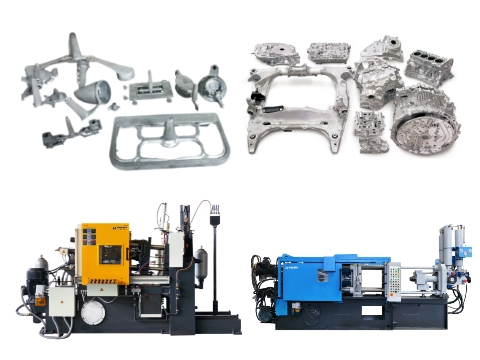
Breakthroughs in the process adaptability of composite materials
The hybrid process of 3D printing and die-casting is currently in the experimental stage.
And can produce complex customized parts, such as irregular structural components in the aerospace field.
Such technologies will expand the application boundaries of robot die-casting in high-end manufacturing.
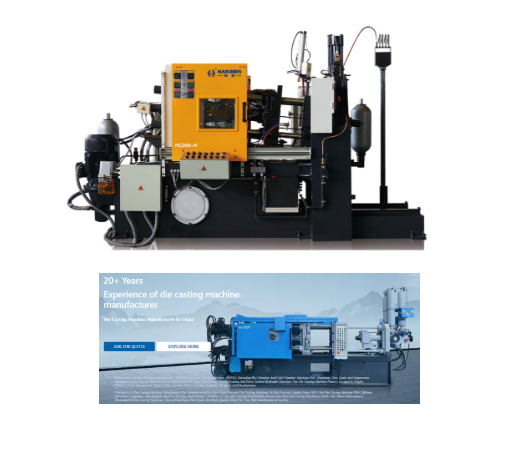
Super-large die-casting equipment and process optimization
- Standard equipment:10,000-ton die-casting machines
- Upgrade of precision post-processing technology
Standard equipment:10,000-ton die-casting machines
The 16,000t die-casting unit of LK Technology has achieved the overall forming of the robot skeleton.
Reducing the number of parts by 70% and increasing the structural strength by 50%.
The 9800T die-casting machine, a collaboration between Seres and Wencan Group, features a two-plate clamping design.
And can produce integrated automotive chassis with a size of up to 2 square meters, increasing production efficiency by 40%.
It is estimated that by 2030, the global market size of super-large die-casting machines will exceed 5.3 billion US dollars, with a compound annual growth rate of 7.98%.
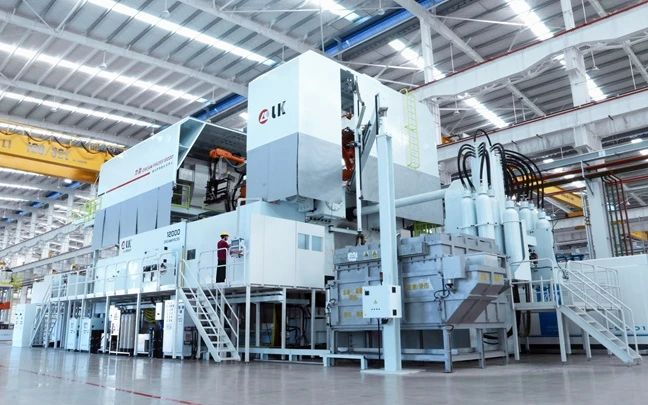
Upgrade of precision post-processing technology
Robot automated deburring and grinding technologies such as ATI’s force-controlled grinding and polishing system can keep the surface roughness within Ra0.8μm.
Replacing traditional manual polishing and increasing efficiency by five times.
Such technologies have been applied on a large scale in enterprises such as XPeng Motors and Weiyi Intelligent Manufacturing.
Expansion of cross-industry application scenarios
- Humanoid robots
- New opportunities in aerospace and low-altitude economy
Humanoid robots
Products such as Tesla Optimus and UBTECH Walker X use die-casting technology to manufacture joints and skeletons.
The processing time of components for a single robot has been shortened from one week to 20 seconds.
It is estimated that by 2026, the global market size of humanoid robot die-casting will exceed one trillion yuan, with an annual production capacity reaching the million-unit level.
New opportunities in aerospace and low-altitude economy
The application of magnesium-aluminum alloy die-castings in the fields of unmanned aerial vehicles and flying cars has grown significantly.
For instance, the chassis of a certain model of flying car adopts an integrated die-casting technology, reducing the weight by 15% while lowering the cost by 25%.
In the future, breakthroughs in the die-casting process of high-temperature resistant alloys.
Such as titanium-aluminum matrix composites will facilitate the manufacturing of aerospace engine components.
Green manufacturing and sustainable development
- Intelligent control and management of energy consumption and emissions
- Exploration of the Circular Economy Model
Intelligent control and management of energy consumption and emissions
The servo energy-saving system of LK Technology reduces the energy consumption of die-casting equipment by 30%.
And in combination with the digital management platform, it enables carbon emission tracking.
The green die-casting process developed by enterprises such as Yizumi reduces metal waste by more than 40% through the recycling of waste materials and the optimization of the cooling system.
Exploration of the Circular Economy Model
The design of new die-casting alloys takes recyclability into account.
For instance, high-alumina zinc-based alloys can be remelted more than five times without significantly reducing their performance.
Policies such as the EU’s “Green Die-casting Certification” will further promote the industry’s transformation towards a circular economy.
Embrace innovation and gain a competitive edge
The die-casting industry is confronted with both challenges and opportunities.
As the market embraces automation, environmental protection practices and digital technologies, the die-casting industry is experiencing rapid development.
These trends are not only expected to enhance operational efficiency and product quality.
But also will make die-casting a key player in the field of sustainable manufacturing.
The die-casting team of Haichen Machinery is always at the forefront of these trends.
Which not only means responding to changes but also leading them.
Ensuring a future where innovation and sustainable development go hand in hand.
Contacting our team and achieving excellence in manufacturing has never been so simple.
